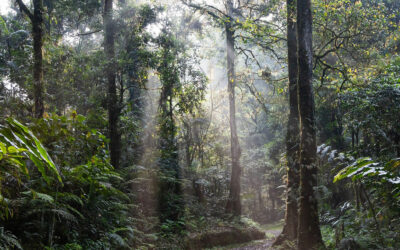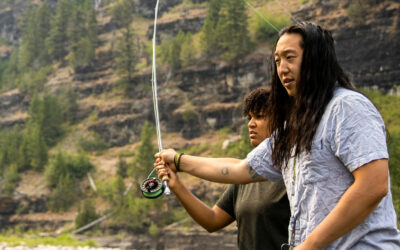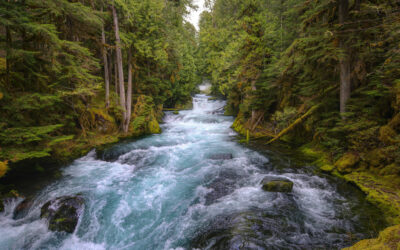Photo credit: © Erik Tanghe from Pixabay.
Unseen Forces Still Wild
Editorial Perspectives
June 2023 | Volume 29, Number 1
Between the precincts of Amun-Re and Montu in the vast Egyptian temple complex of Karnak is a dark little room permitting only a single shaft of sun- or moonlight to enter. This is the House of Sekhmet, the healer and destroyer, and for four millennia she has dwelled here.
Upon entering, even the most stalwart skeptics often report experiencing an electric charge of energy crackling across their skin, causing the hairs on their arms and legs to stand on end and their limbs to vibrate reflexively. What they report when they gaze upon the black granite statue of the Powerful One or, even more boldly, try to take her photograph, is even harder to believe. More difficult to dismiss, however, is the collective and decades-long complaints of the local people. The locked gate that bars this room from visitors (only those who “befriend” guards gain entrance) was put in place because the citizens of the neighboring city genuinely feared that a dark lion – the aspect of Sekhmet – prowled the ruins at night.
The House of Sekhmet alone is worth the journey to Egypt. But one need not travel so far to experience an immaterial connection with unseen forces. Wilderness, after all, still exists, and is, for most, far closer than the eastern banks of the Nile. How many times have you stepped into a forest and sensed an all-encompassing presence while simultaneously feeling viscerally calmer, more connected, and more alive? When was the last time you gazed upon a snow-covered peak and experienced the thrill of electricity running down your spine? How often have you traveled to a wild and lonely landscape to suddenly sense with utter certainty that you are both infinitesimally small and infinitely content?
And what, then, of the unseen forces, the genius loci responsible for our physical response to the wild? Who or what are they? Are we responding to the titanic processes that have, on timelines we cannot fathom, forged the conditions necessary for life? The roots and soils that store vast amounts of carbon and regulate the entire atmosphere. The myriad digestive systems that give birth to forests. The subterranean mouths that alchemically transform abiotic materials into the building blocks of life. Or is it just on a deep evolutionary level we recognize that we are coming home – coming home to the wild, the womb of life?
It is difficult for many to conceive that we humans were once wild beings, and maybe still are. Civilization has transformed many things, not the least of which is the biosphere and our relationship with it, but civilization still has not managed to transform the fundamental reality that regardless of how we perceive ourselves, we are, materially and perhaps immaterially, still dependent on wilderness. That we often neglect and profane this living temple makes its power and necessity no less real.
That’s one of many reasons the community surrounding the IJW is so special. Because you, dear reader, recognize that on some level you are still wild, that we are all still wild. And you also likely intuit that to be truly wild means to be a contributing member of the community of life force on this planet. Just as bison maintain the plains and the panther creates harmony in the forests, you envision a place in the world for yourself and others that enhances the web of life. For me, this is what it means to be wild. And this is why the IJW is so important – because it is helping to sustain the community that will share those values with others.
Challenging times await us, both ecologically and as a community. The wild is in retreat, as a place and a concept. It is my hope that we can come together like never before, as an international community of journal readers, as practitioners, and as activists, and bring our collective knowledge and strengths to the defense of wilderness. It is my sincere belief that the IJW has an important role in this effort, and I look forward to being one of many who help steward this evolution over time.
In this issue of IJW, we remember Dr. Kathy McKinnon, former chair of the IUCN World Commission on Protected Areas. Lisa Ronald and her coauthors investigate how we might make wilderness more welcoming by assessing barriers to inclusion. Jason Taylor and the Aldo Leopold Wilderness Research Institute staff present their 10-year wilderness science strategic plan. Howard Smith and others discuss shifting baseline syndrome among whitewater outfitters and guides. And Suyash Keshari and Bhavna Menon tell the story of India’s Tigers.
Warm and wild regards,
Amy Lewis.
About the Author
AMY LEWIS is interim president of the WILD Foundation; email: amy.lewis@wild.org.
Read Next
Kathy MacKinnon
A Smart, Dedicated, Accomplished, and Compassionate Conservationist
Can We Make Wilderness More Welcoming?
An Assessment of Barriers to Inclusion
Wilderness Perspectives: Zahniser’s Support for the Authentic Wilderness Experience
When many of us picture Howard Zahniser, we think of one image. With a focused look on his face, we see Zahnie looking directly into the camera in his backyard in Hyattsville, Maryland, wearing a custom-tailored suitcoat.



